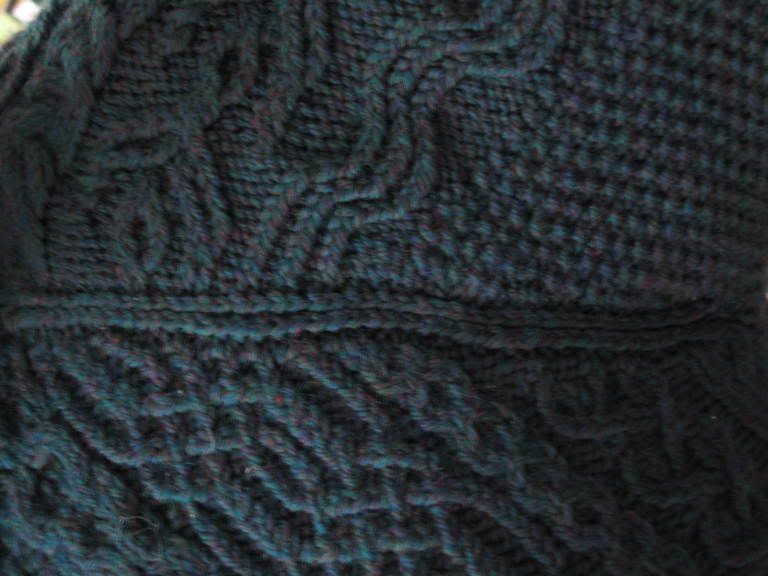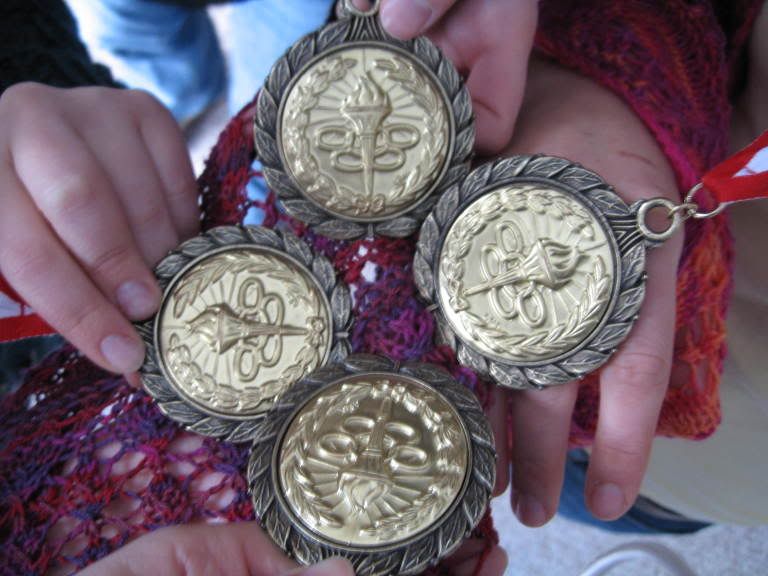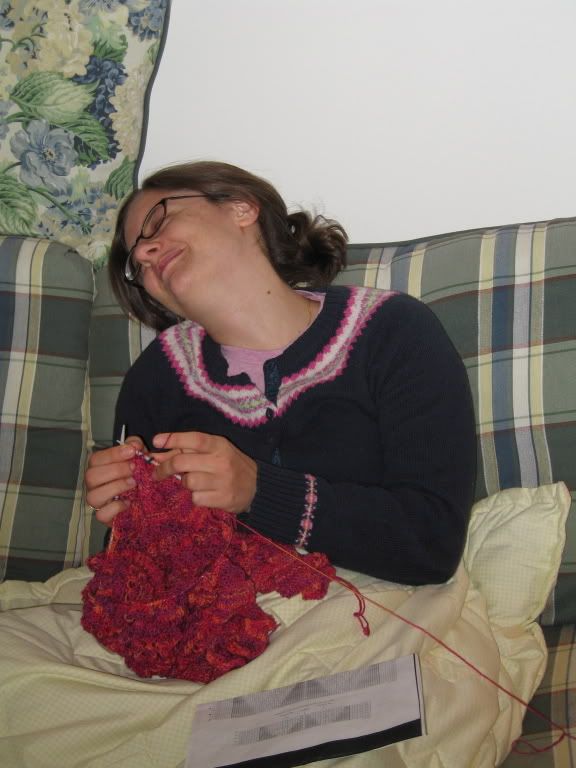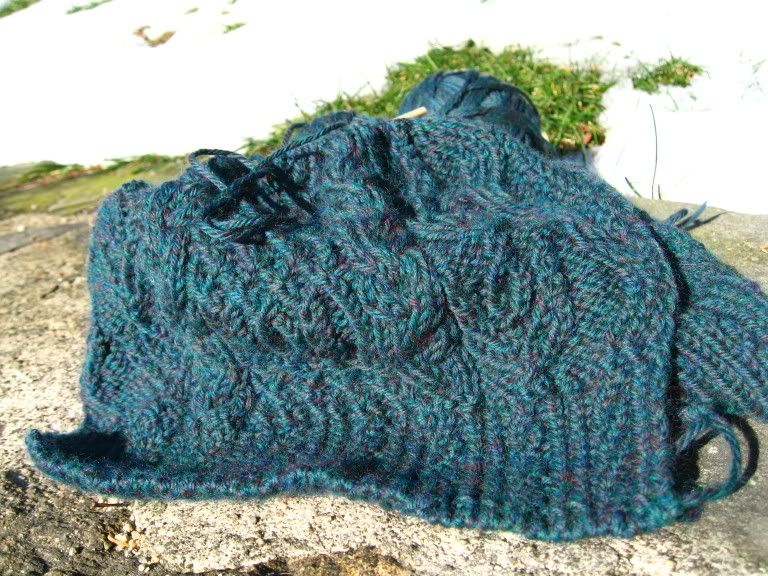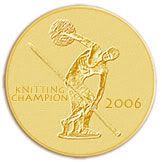At My Hearth
as much as any monarch on his throne.
-Miguel de Cervantes, Don Quixote
 As "Antje, Katja's mom" (one of my favorite commenters, by the way) has pointed out, Am Kamin means "at the hearth" or "at the fireside" in German. We're all a little perplexed as to how this came to be in a Japanese pattern book, subtitled "New Style of Heirloom Knitting" (in English), came up with a German title for the pattern. Nevertheless, it adds to the international flavor of my Olympics.
As "Antje, Katja's mom" (one of my favorite commenters, by the way) has pointed out, Am Kamin means "at the hearth" or "at the fireside" in German. We're all a little perplexed as to how this came to be in a Japanese pattern book, subtitled "New Style of Heirloom Knitting" (in English), came up with a German title for the pattern. Nevertheless, it adds to the international flavor of my Olympics.Pay no attention to the windswept, trying to keep from shivering form on your left. It was really really cold when we were taking these photos.
And now, all the knitterly details you've been waiting for:
Am Kamin
Pattern: Am Kamin from New Style of Heirloom Knitting, details of how to order the Japanese book on the Crossed in Translation KAL blog
Yarn: Cascade 220, color 4007, approx 7 1/2 skeins
Needles: US 7 Addi Naturas
Notes: (Of particular interest to others knitting this sweater.)
- Reading Japanese patterns is so easy! Seriously! I've gotten a lot of emails and comments from people who look at it with fear, but as soon as you sit down with it, it's no different than any other charted knitting pattern with great schematics. In many ways, it was easier than a lot of English patterns.
- Along those lines, this is a great pattern for reading your knitting. I didn't do any extra charting or spreadsheeting or anything - I just knit from the pattern. To maintain the delightful mirror-image symetry, just start knitting the row from the other direction. I thought of every cross as "towards the center" or "away from the center."
- The raglan shaping at the shoulder (sleeve on top, and the seam is straighter in real life):
- I had serious row gauge issues that necessitated me knitting more rows than called for in the pattern. The downside? Takes longer. The equivocal side? Heavier sweater. The silver lining? More lovely patterning.
- The K2tog yo buttonholes are quite stretchy. If they stretch too much, I'll reinforce them.
- I left all the stitches at the collar line live rather than binding them off and used them for the collar.
- I notice that my right slanting lines of twisted stitches are more pronounced than my left slanting lines. Is this technique? I've recently heard of twisting stitches in both directions, which might account for the difference. Something to explore later.
- The tubular cast on is the most gorgeous thing I've ever seen, and the tubular (aka Kitchener) bind off is similarly worth the extra time. Check it out on the collar.
